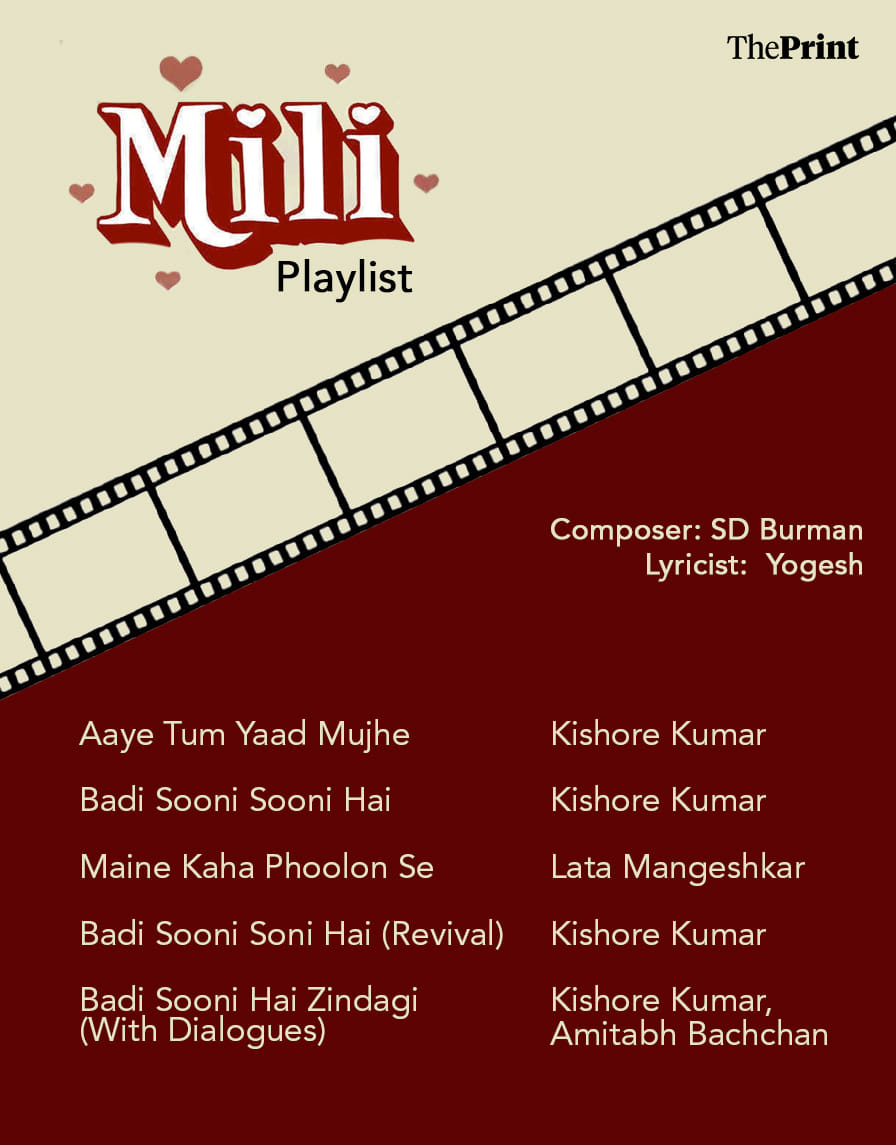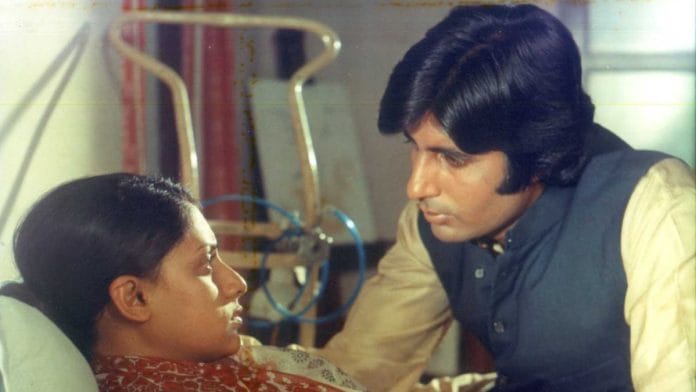The year Rajesh Khanna made everyone bawl their eyes out in Anand, 23-year-old Jaya Bachchan made her Bollywood debut with Guddi. It was 1971– Khanna was already a superstar, while Bachchan was still finding her footing. No one could have anticipated that, four years on, she would rival Khanna’s Anand with her heartbreakingly beautiful performance in Hrishikesh Mukherjee’s Mili.
With this 1975 film, Bachchan – then credited as Bhaduri – established herself as a serious performer in an era where women were confined to glamorous, arm-candy roles. Playing the titular role of Mili, a young woman battling pernicious anaemia, she brought a unique warmth and resilience to her character.
The film unfolds as a love story between Mili and her neighbour Shekhar (Amitabh Bachchan) – a depressed and cynical alcoholic whom she manages to change with her cheerful ways. However, his world begins to collapse when he learns of Mili’s then-incurable condition.
Anand vs Mili
Anand and Mili share many thematic similarities. Both films were directed by Mukherjee and starred Amitabh Bachchan in a supporting role. And both revolved around optimistic, terminally ill characters.
But each was different in terms of execution and messaging. As Sampada Sharma put it in her article for The Indian Express: “She [Mili] is not as verbose as Anand about her philosophy of life. While he keeps reminding the audience that ‘zindagi badi honi chahiye, lambi nahi’, Mili just lives it. She has her quiet moments in the dead of the night, and that’s where we discover her vulnerable side.”
While Anand is a tale of friendship, Mili is a romance and a heartwarming tale of a village coming together to care for one of their own. The love story between the much-older Shekhar and the college-going Mili, which might seem a bit out of place now, works amazingly well due to the actors’ nuanced performances and undeniable on-screen chemistry. Ashok Kumar is also memorable as Mili’s loving and supportive father, who cheers her on with jokes in the morning and loses sleep over her illness at night.
Also read: Love in Simla—Bollywood film that popularised Sadhana cut & showcased India’s new elite
Moving music, performances
A lot of the conveying of emotions between Shekhar and Mili takes place through songs – produced by the legendary Sachin Dev Burman and written by Yogesh. For instance, it is Shekhar’s heartbroken singing that makes Mili curious about her new neighbour. When she is in her sick bed, he sings the mournful Aaye Tum Yaad Mujhe. Kishore Kumar’s voice conveys Shekhar’s grief over Mili’s illness, and his sheer inability to cope with the fact that the one beacon of hope in his life might not last.

There’s also Maine Kaha Phoolon Se in Lata Mangeshkar’s voice, which shows how Mili’s charm disarms the tortured Shekhar.
Mili’s screenplay and dialogue elevate its emotional richness. The very first interaction between Shekhar and Mili is a take on the classic disastrous first meeting – as evident in Mukherjee’s Chupke Chupke (1975) – that leads to a romance once considered impossible. As they bond over play dates with children and stargazing, love blossoms between the contrasting personalities. And when Mili’s health takes a turn for the worse, Shekhar reveals his helplessness in beautiful words, captured in handwritten letters and impactful dialogues.
“How can I live in the same building where just a floor below mine lives the girl who taught me how to live, and who might die any day,” he asks Runa (Aruna Irani) in one scene, the building housing committee’s secretary and Mili’s friend.
Shekhar decides to fight for Mili, marry her, and use his inheritance to try and let her live longer by moving to Switzerland for a drug trial. The film’s ambiguous ending seems to be Mukherjee’s way of saying that sometimes, hope is the only happy ending guaranteed in life.
Jaya takes the centre stage for the most part. But in a scene where Amitabh cuts his hand on broken glass after breaking things in rage, it’s impossible to look away from him. Watching his journey from Anand to Mili, one can see the evolution of Amitabh’s acting prowess. The slurred speech and brooding gaze that he popularised in Muqaddar Ka Sikandar (1978) find early expression in Mili. Through his powerful emotional performances in Mili and Anand, Bachchan showed that he was more than Bollywood’s favourite angry young man.
The year 1975 was eventful for Jaya Bachchan, who also shone in Chupke Chupke and Sholay despite being part of ensemble casts featuring Amitabh, Sanjeev Kumar, and Dharmendra. She showed that, no matter the length of her role, she would always make an impact on screen. Bachchan embodies her character’s sunny demeanour and propensity for pranks, making the audience root for her.
This is evident in an early scene in Mili, where she hosts a party to celebrate the Vir Chakra awarded to her Army officer brother (Suresh Chatwal). However, when her father worries that the food isn’t enough, Bachchan’s witty Mili comes up with a jugaad. “Add lots of chilli – it’ll make people drink more water, and lose their appetite.” In that fleeting moment, one can’t help but fall in love with her character – clever, puckish, and simply unforgettable.
Views are personal.
(Edited by Zoya Bhatti)






